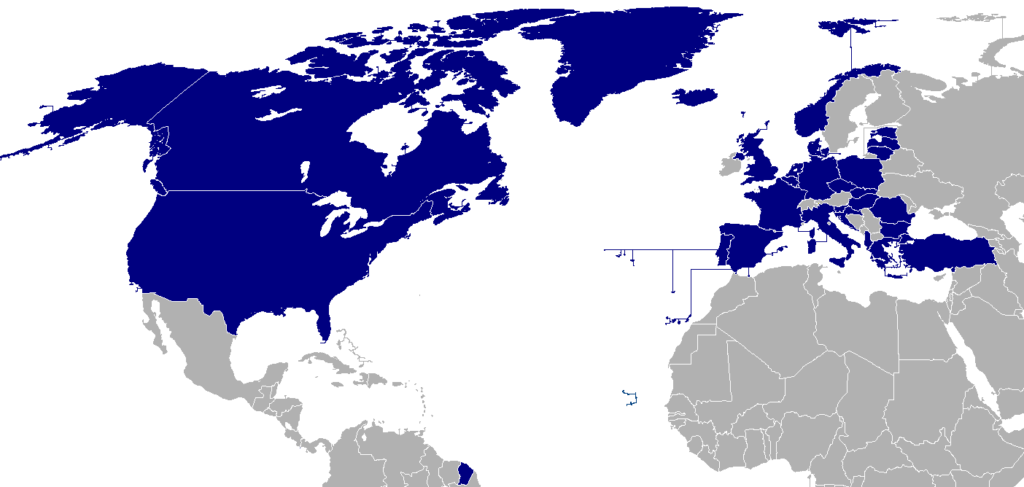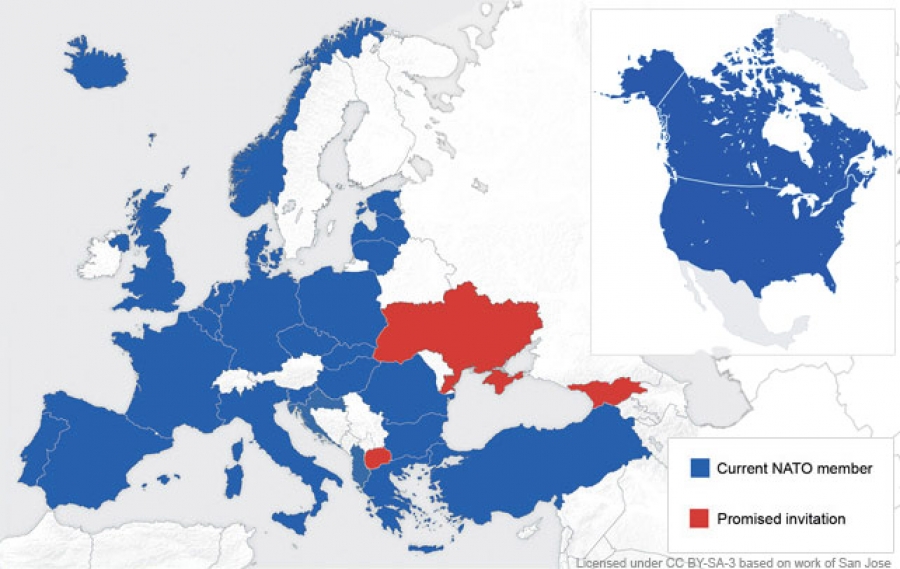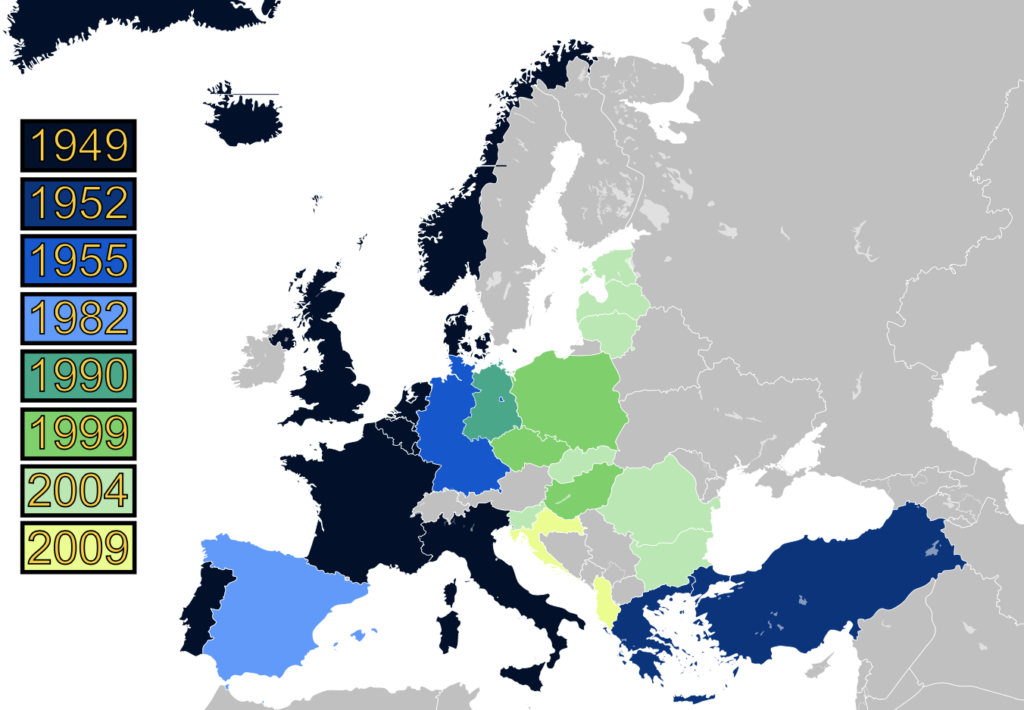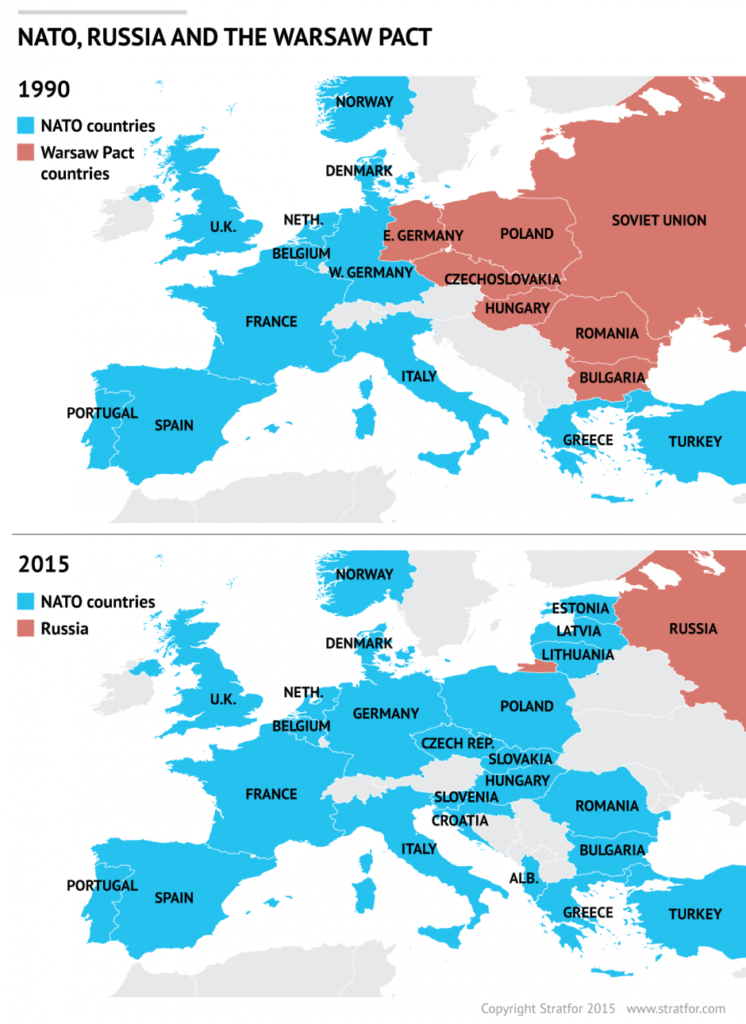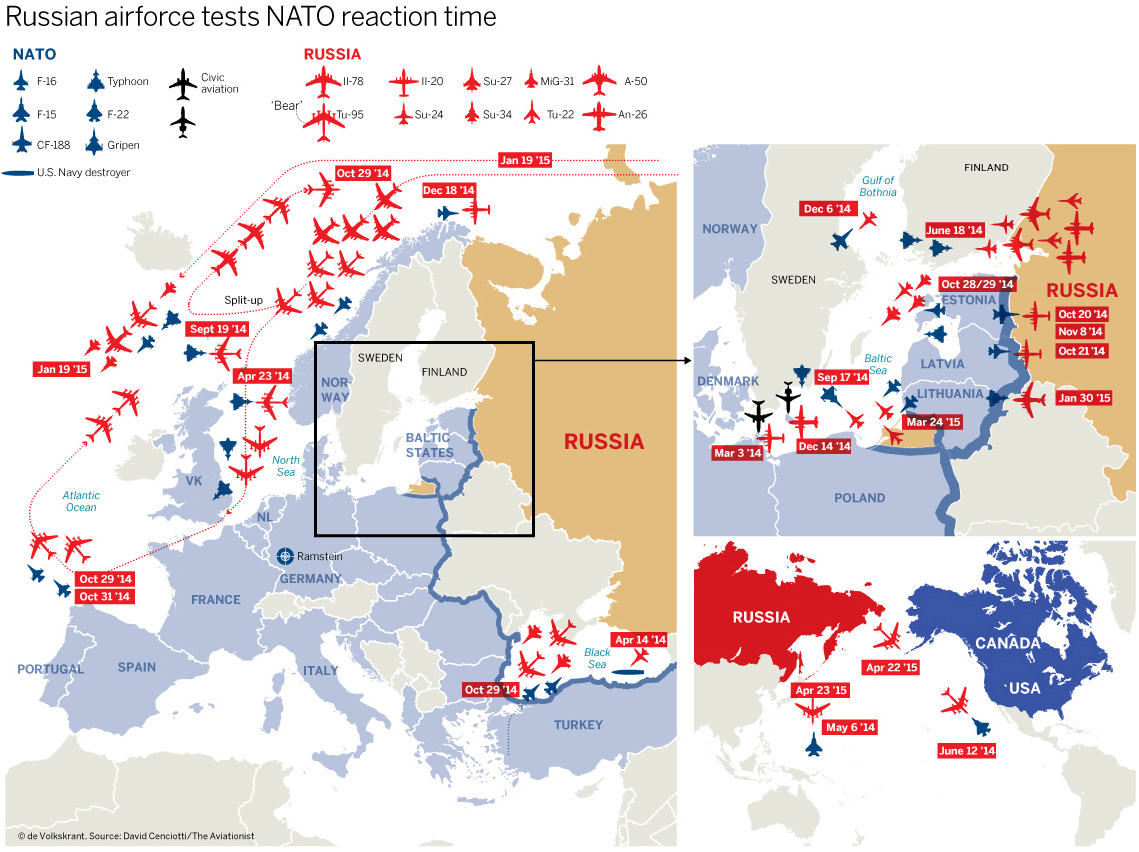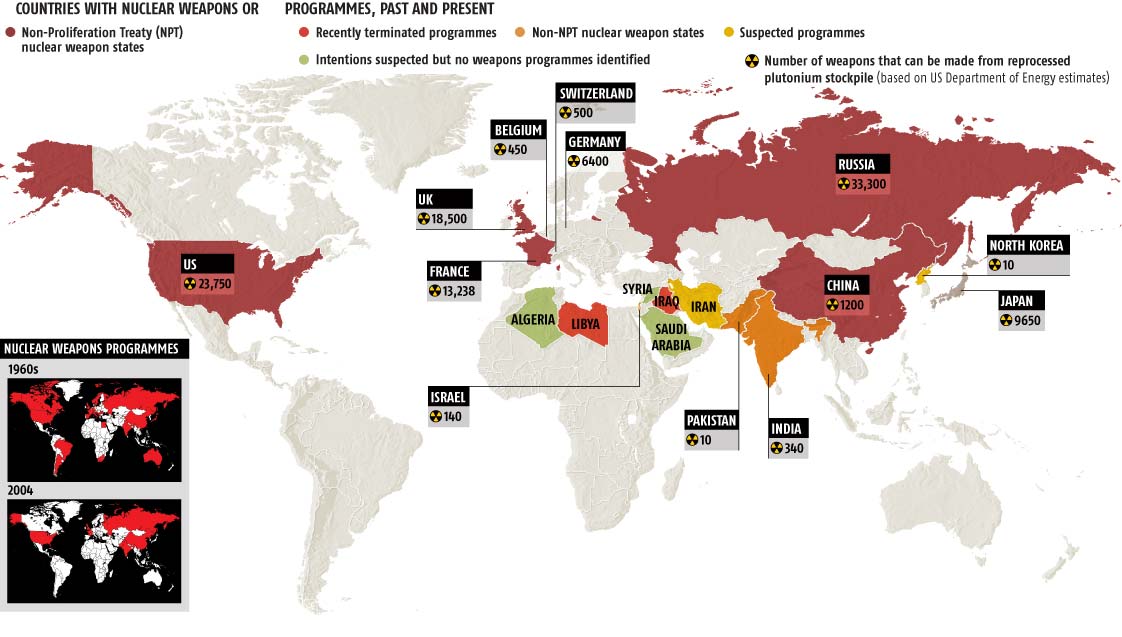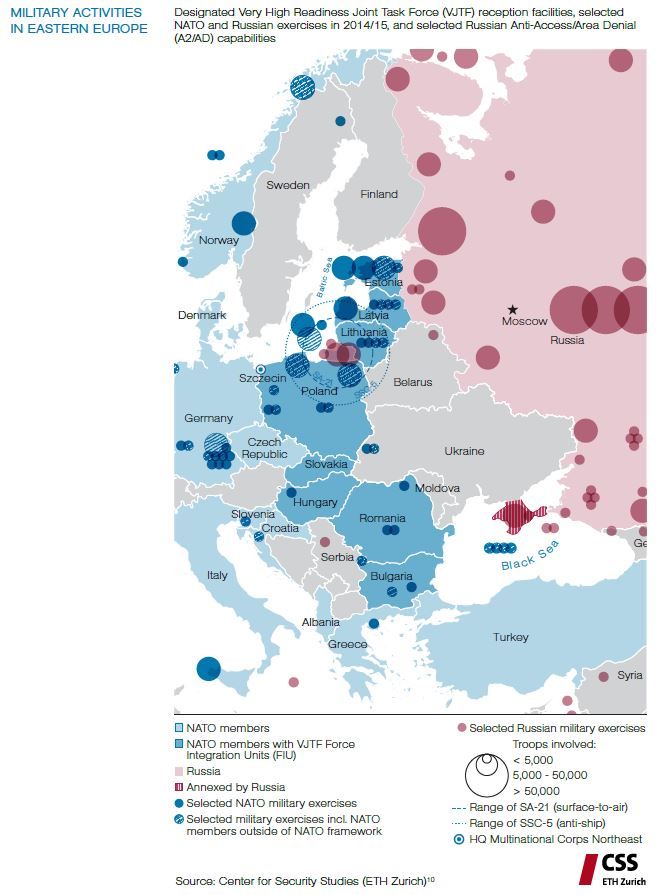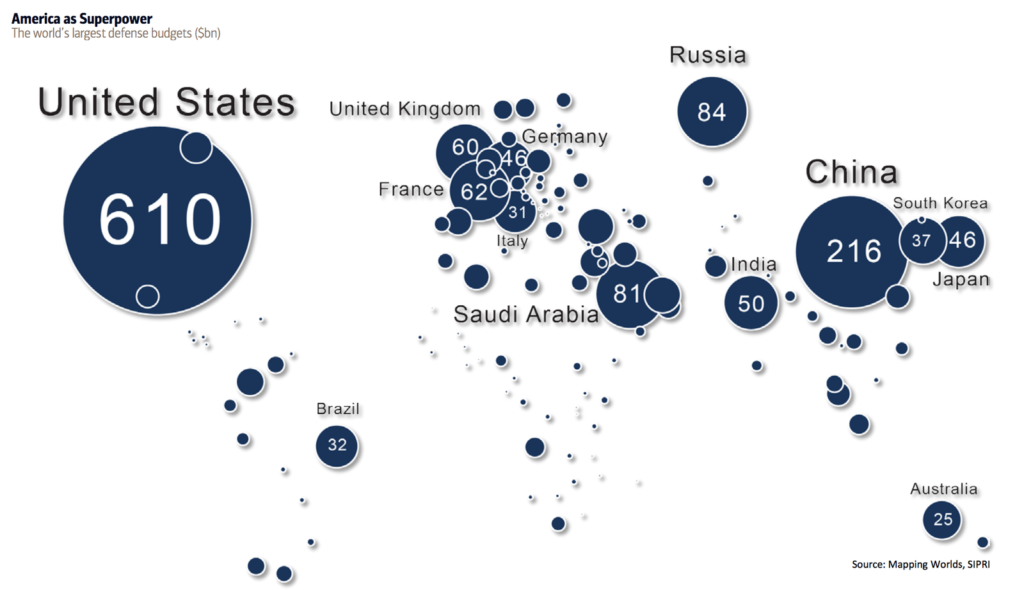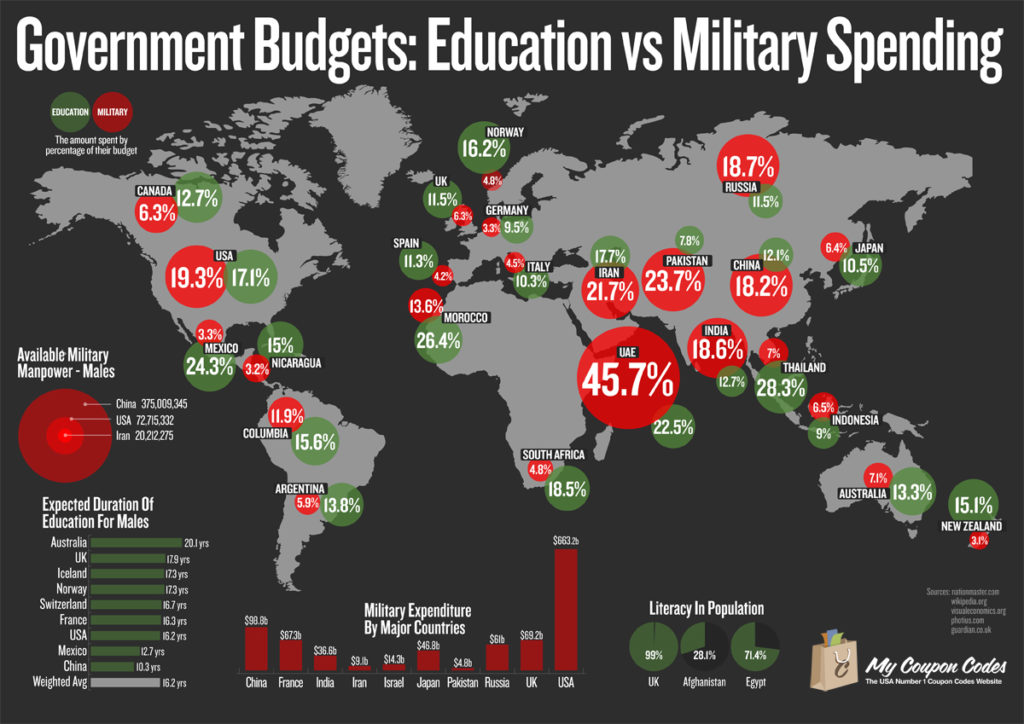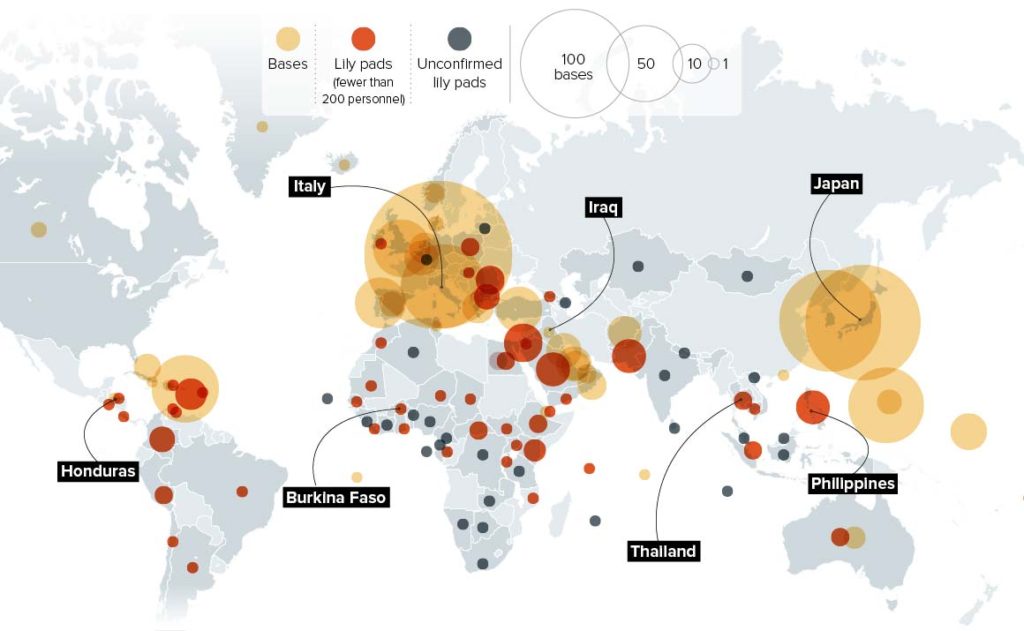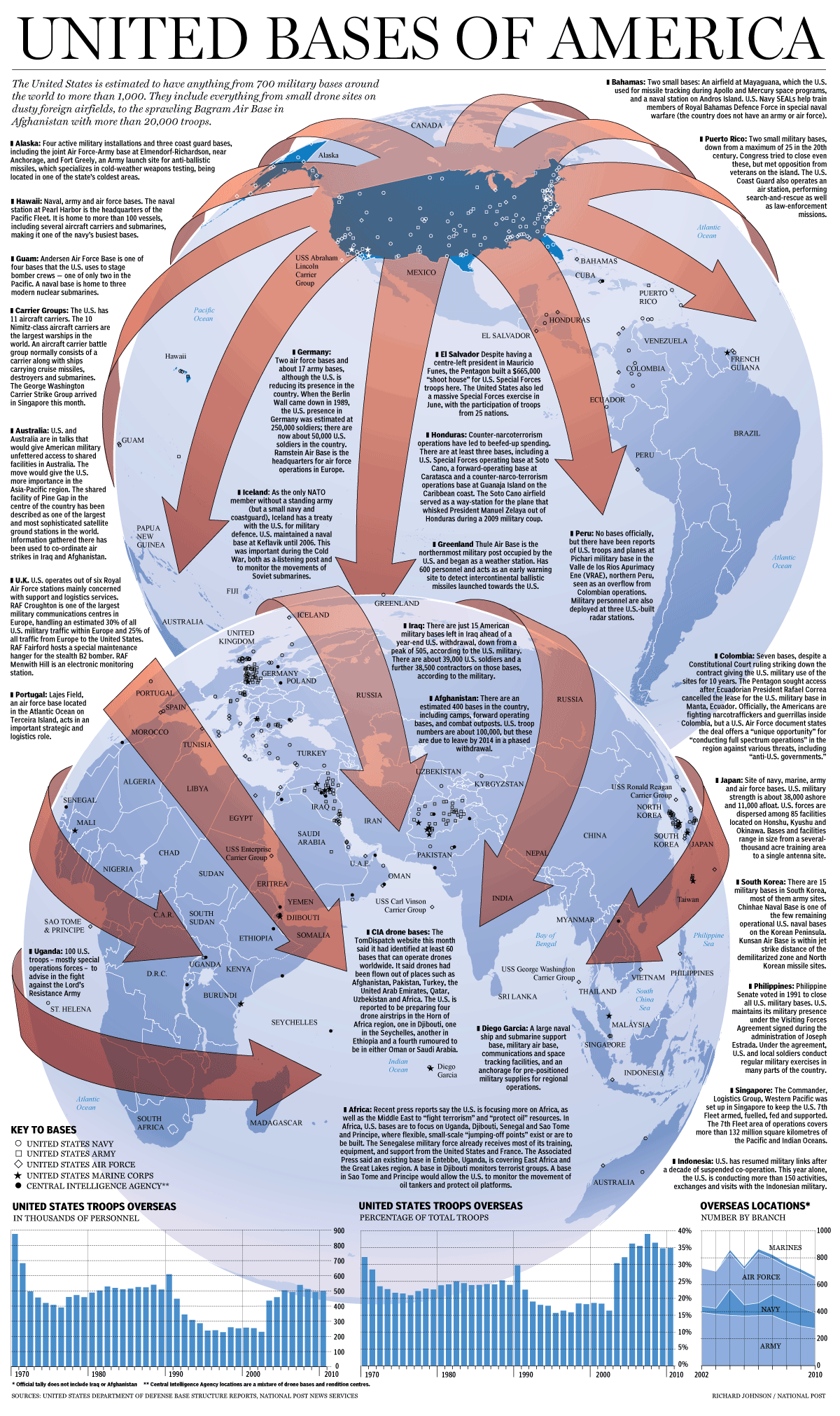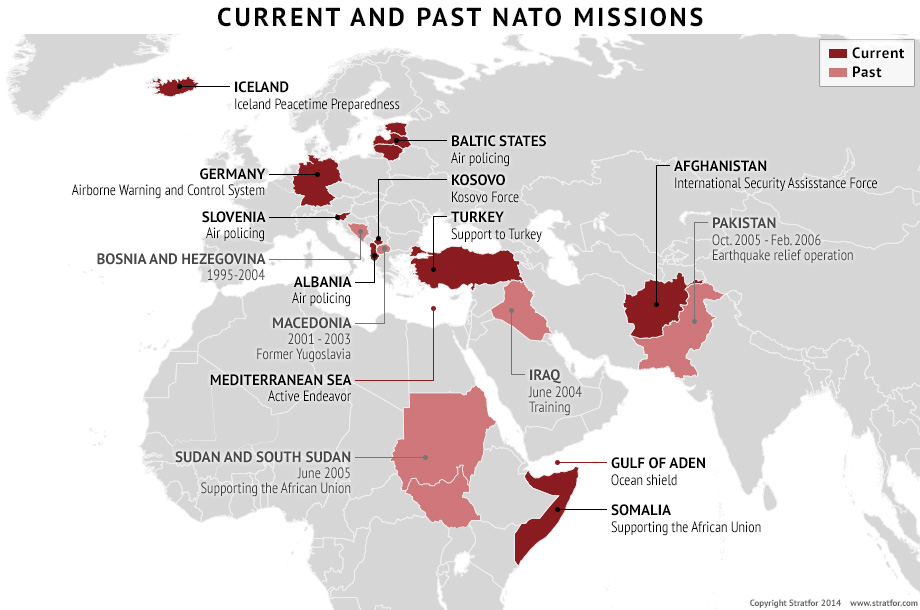
Top 14 maps and charts that explain NATO
The North Atlantic Treaty Organisation (NATO) is a military alliance originally established in 1949 with 12 member states, including America, Britain and France. The goal of the alliance was to avoid future war in Europe and to allow stable growth in peace. Today, NATO has 28 members including most of Europe, representing a population of more than 900 million.
The main goal of NATO is set out in Article V of the North Atlantic Treaty, which says that an “armed attack against one” NATO member “shall be considered an attack against them all”. As the US is the biggest military power in the world effectively the agreement binds America to defend Europe.
The following maps and charts try to explain what is NATO and why it’s needed.
Also read: Top 27 maps, charts and videos that explain Ukraine and the Russian Aggression
1. NATO Member states
2. Countries with a promised invitation to NATO
source: CNDUK
3. NATO has added 12 new members since the German reunification and the end of the Cold War.
4. NATO vs. Warsaw Pact
In 1949, the prospect of further Communist expansion prompted the United States and 11 other Western nations to form the North Atlantic Treaty Organization (NATO). The Soviet Union and its affiliated Communist nations in Eastern Europe founded a rival alliance, the Warsaw Pact, in 1955.
source: Stratfor
5. Russia is testing NATO’s reaction time around the world (events between 2013 and 2015)
source: The Aviatonist
6. Nuclear weapons around the world
7. Risk of unintended war with Russia
source: VOX
8. Military spendings
source: Bank of America
9. The US spends more on the military than the next 15 countries together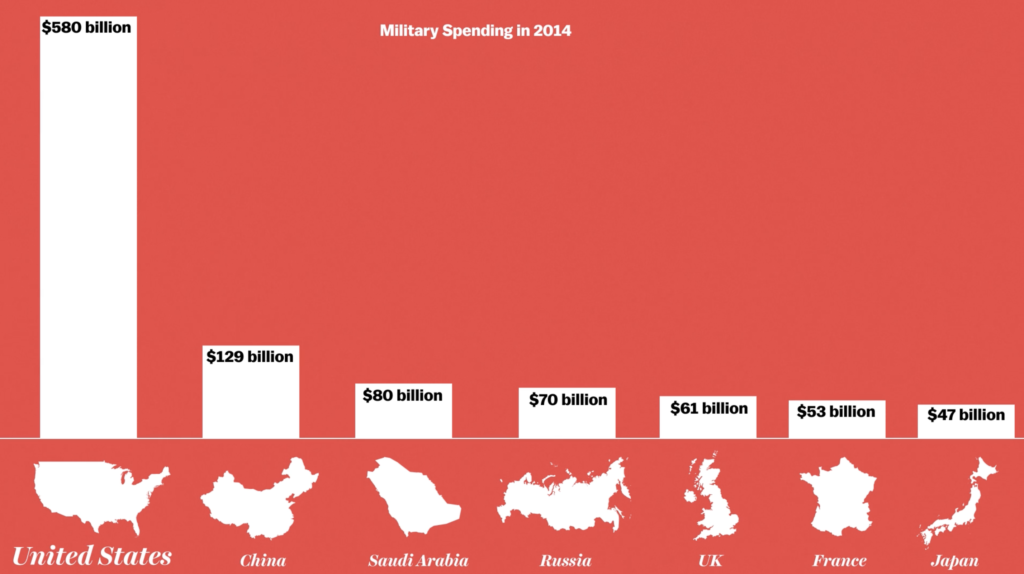
The US spends more than the next 15 countries combined on its defence budget. China is the only nation approaching the US’s defence budget, In 2015 Chinese military budget increased from $129 to $216 billion.
source: VOX
10. Eduction vs military budgets by country
source: technocraticparty.us
11. US military based around the world
source: Politico
12. And a closer look into US military bases
source: Makanaka
13. Current and past NATO missions
source: Stratfor
14. How World War 3 Could Destroy The Planet
source: Imgur
Also read: Top 27 maps, charts and videos that explain Ukraine and the Russian Aggression
Did you like this post? Read more and subscribe to our monthly newsletter!


